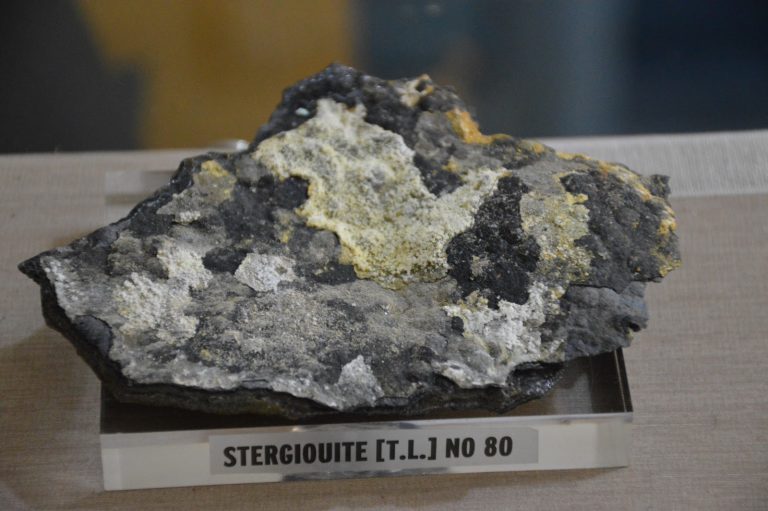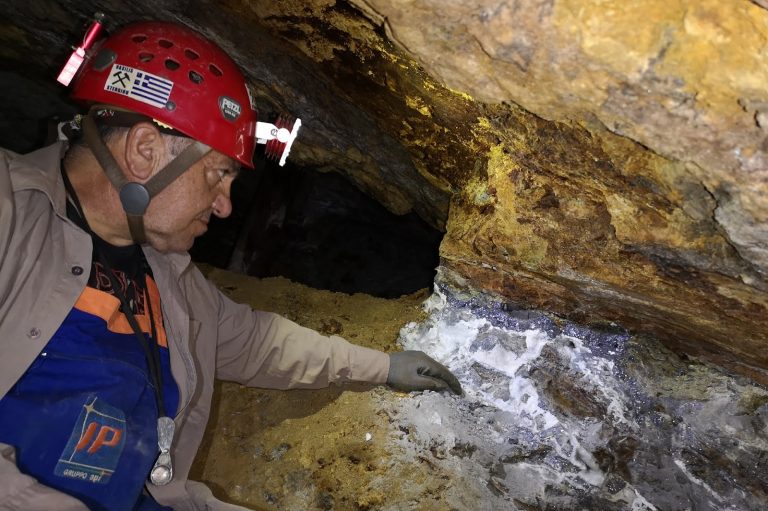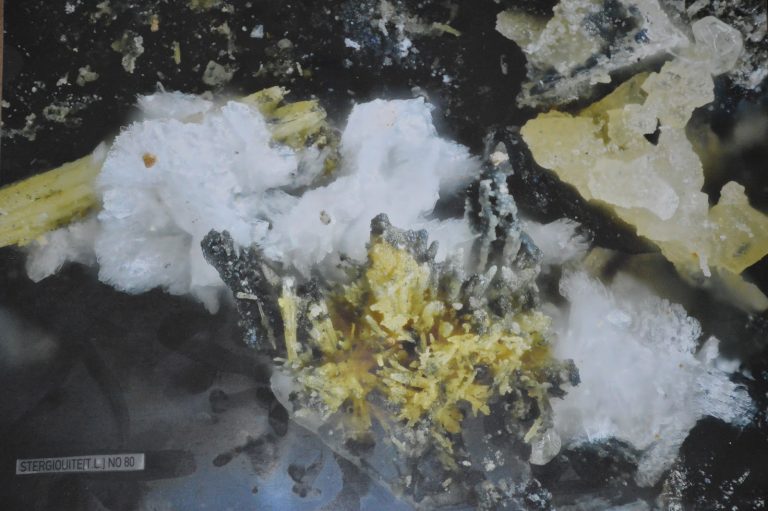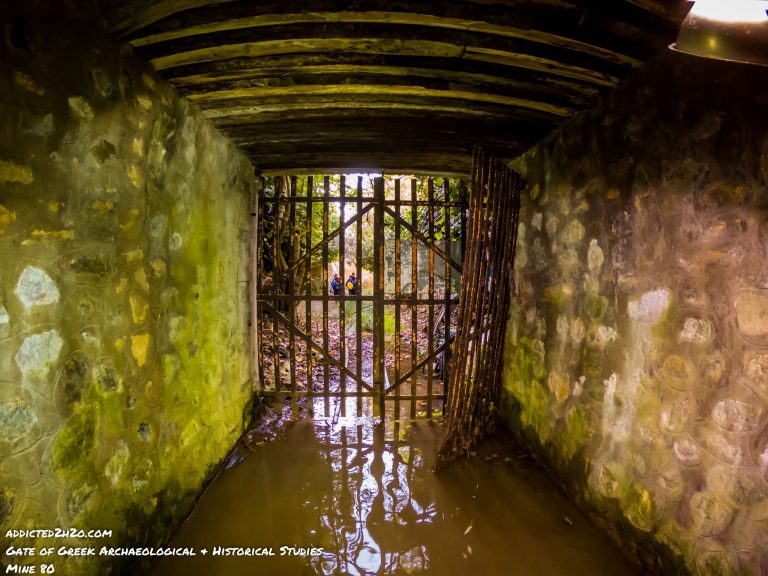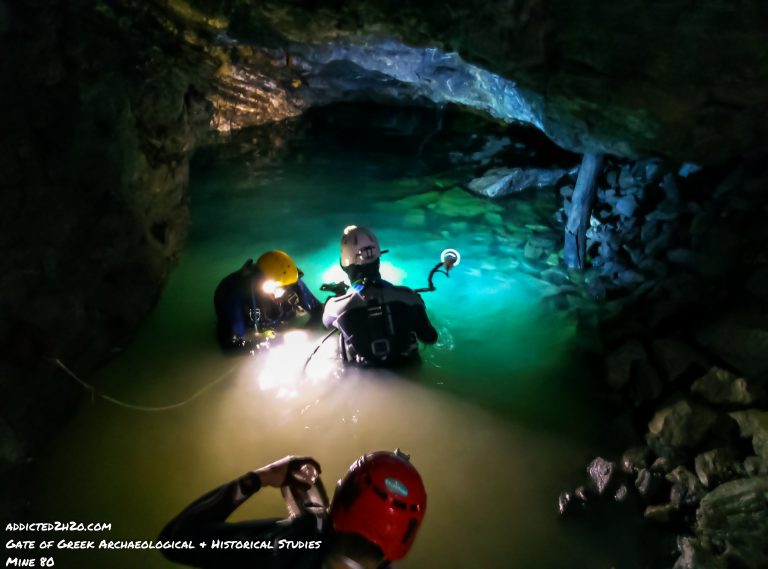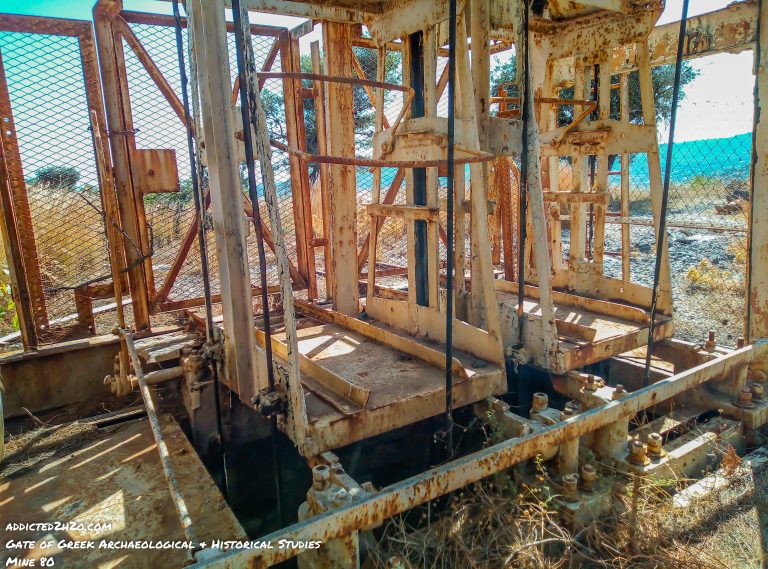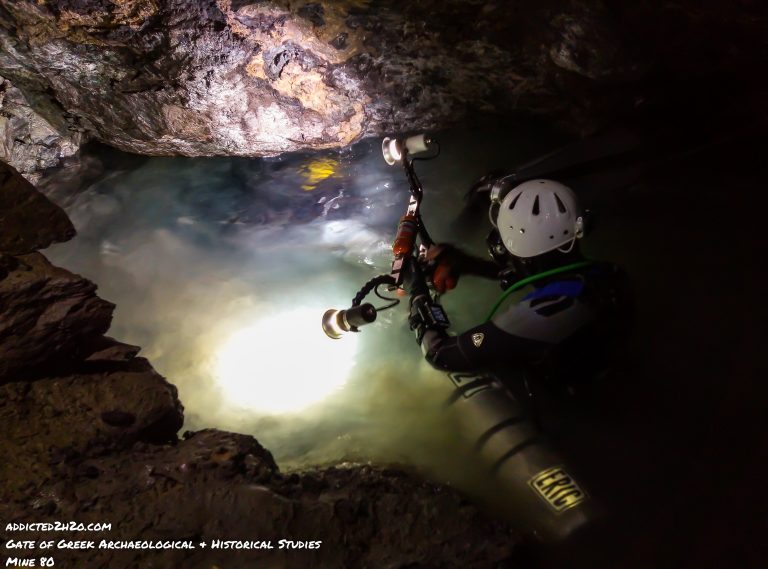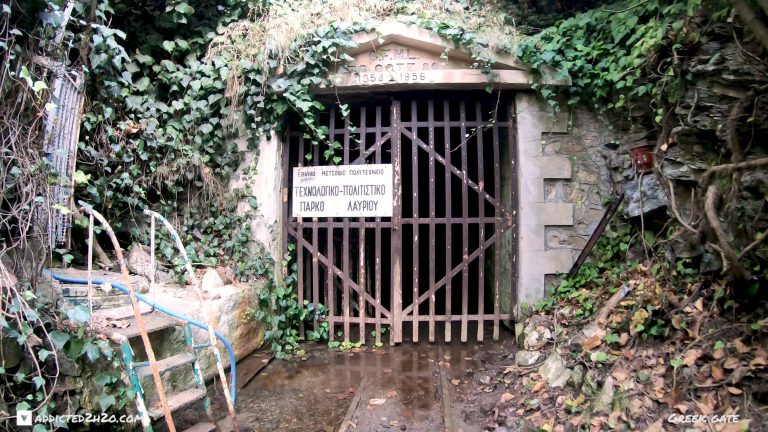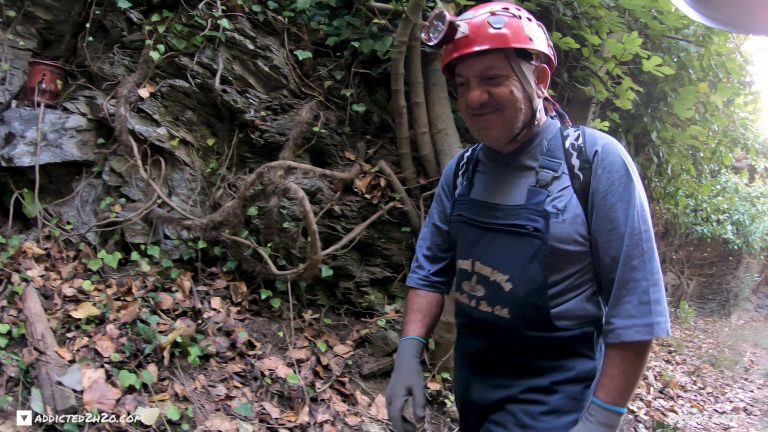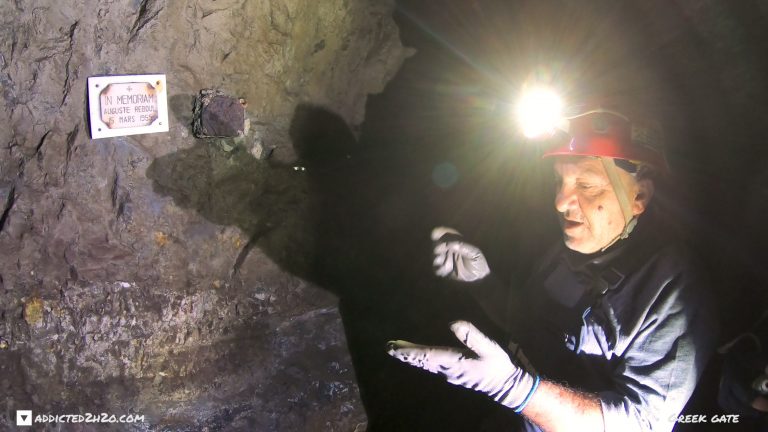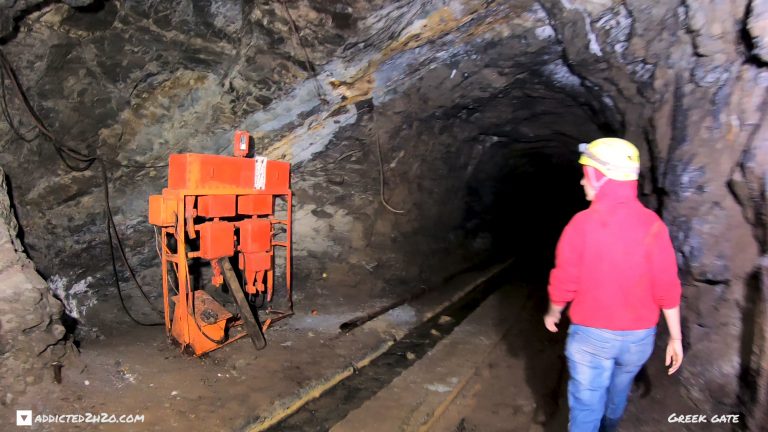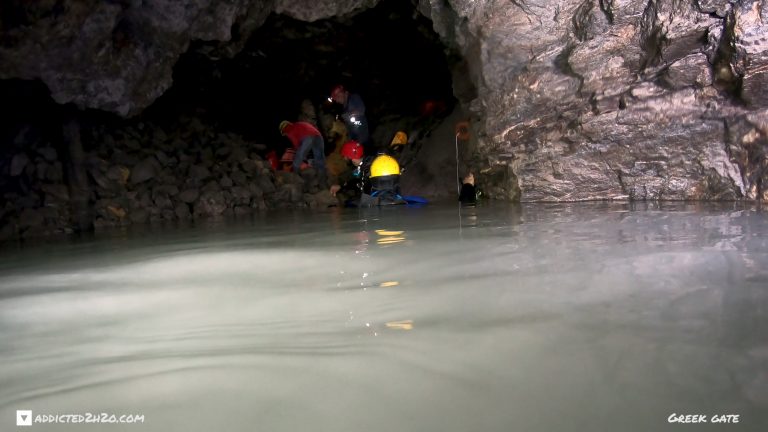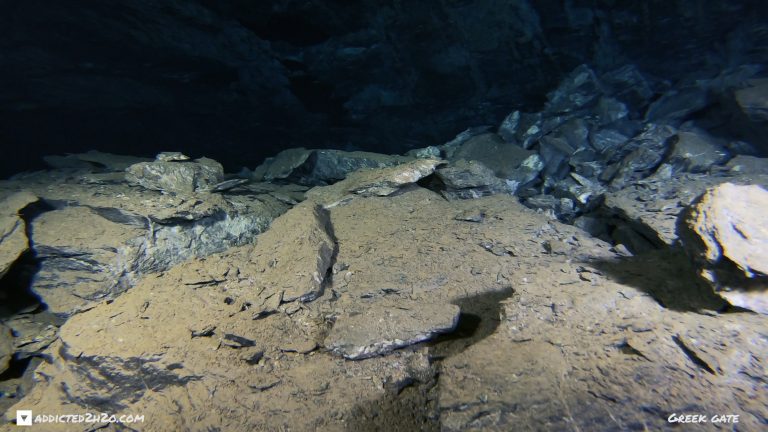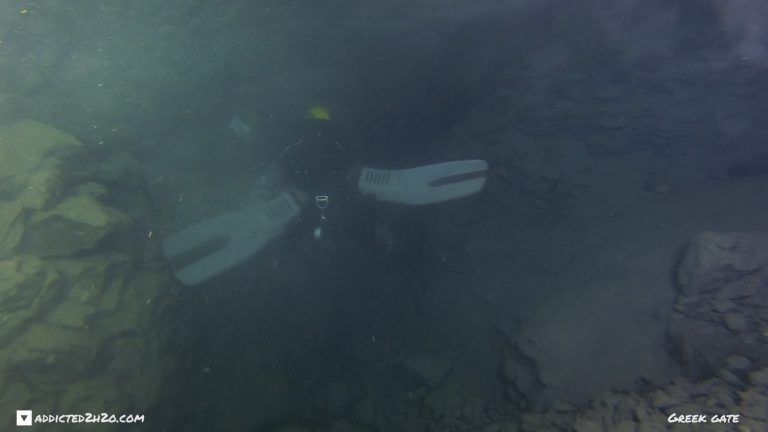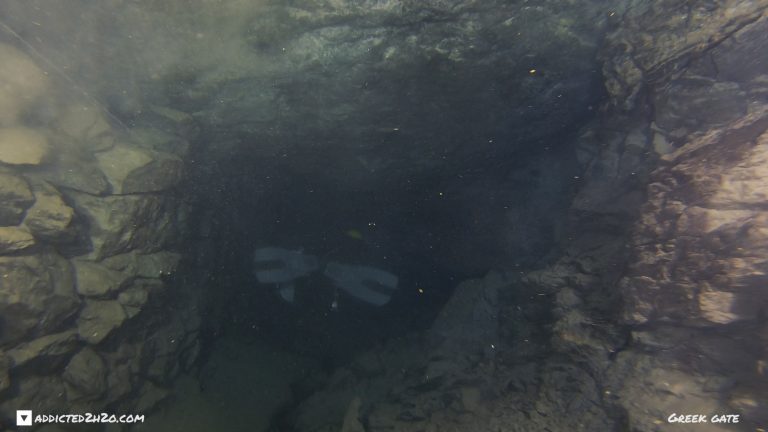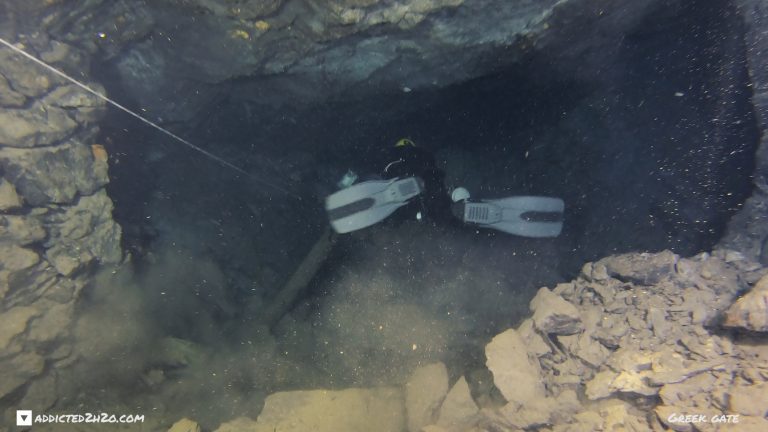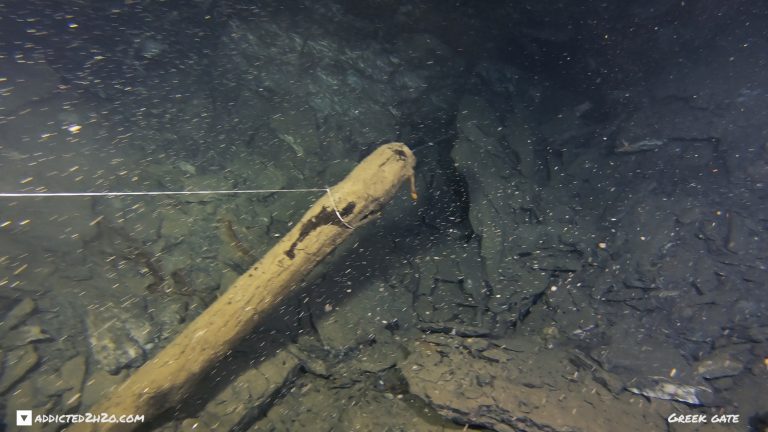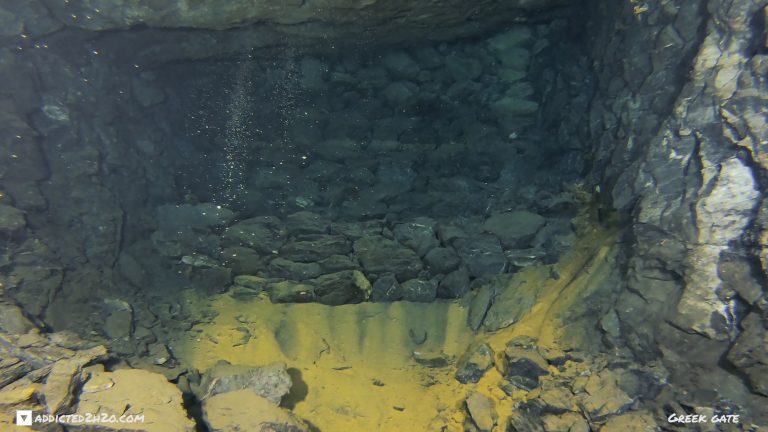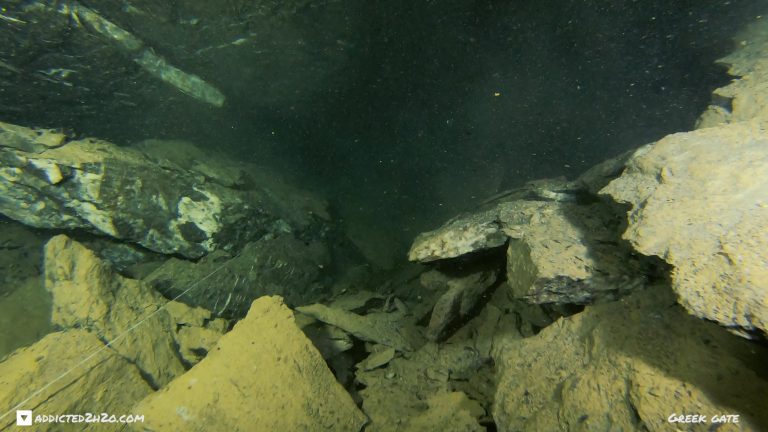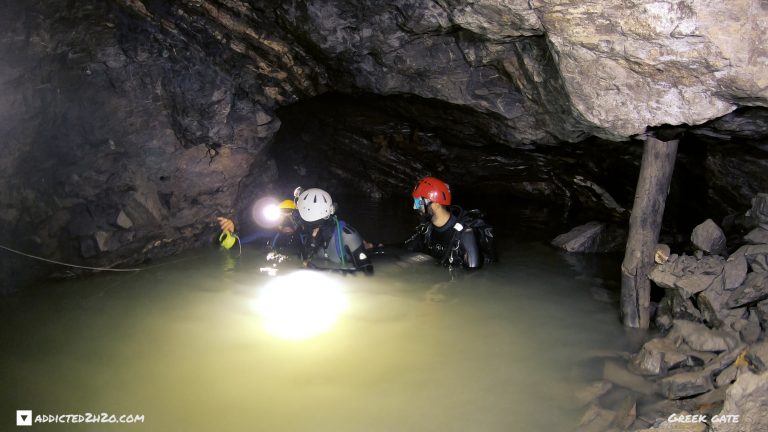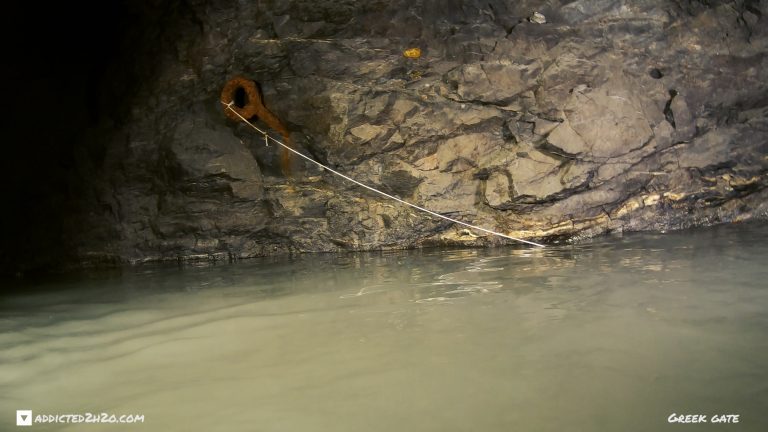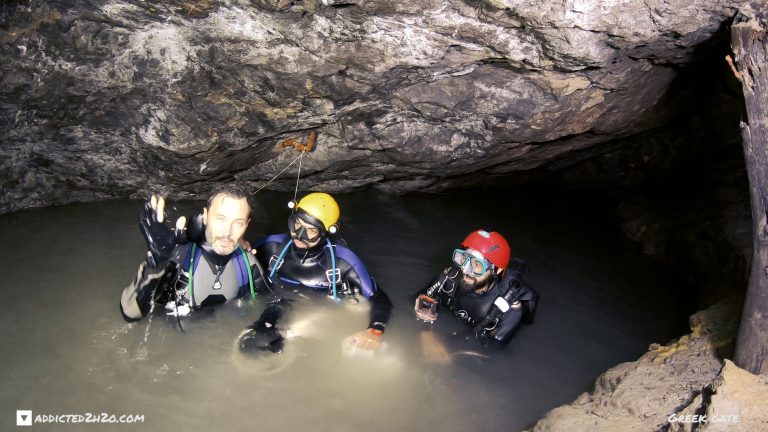Underwater Exploration
Mine 80
The central mining gallery number 80, conceals many secrets. After a difficult 45-minute descent into the heart of the mine, and crossing semi-collapsed arcades, the team managed to reach the flooded section. Cave divers Erikos Kranidiotis & Stelios Stamatakis made three dives in three different branches. From there they discovered the continuation of the mine and the existence of many galleries that branch out in many directions. Mine 80 is a large central gallery with many branches, one can find machinery and wagons inside. It functioned mainly in the 1950s but was abandoned due to the influx of water. Especially in its lower part, which is quite restricted, access and movement is extremely difficult.
The clarity and visibility of the water in the mine was poor in the beginning and got better at some pints as the dive progressed further. The temperature of the water is 16 Celsius. Percolation from the exhalation of bubbles and fin movement during entry create poor visibility conditions.
The divers laid approximately 200 meters of cave line in three different passages they explored. Getting the divers and equipment to the dive site is a great challenge. The team walked approximately 500 meters on old rail tracks used by the miners to extract the ore. Following this they descended 100 meters in depth assisted by rope in many steep parts of the mine in order to reach the dive location.
It is worth noting that when exploring the second passage after approximately 50 meters of penetration the divers heard water flowing near to their location. The further the divers progressed the louder the noise got. It seems there is an underground stream flowing in parallel to the underwater passage the divers were exploring. This may have been the reason why this mine was eventually abandoned due to the constant influx of water.
A new mineral “Stergiouite” was first discovered in 2018 by Mineral Researcher Dr. Branko Rieck at the Plaka mine (“Filoni 80”) of Lavreotiki included in the Lavrio Mines. Rieck, B., Giester, G., Lengauer, C. and Topa, D. (2019) IMA 2018-051a. CNMNC Newsletter No. 47, February 2019, page 203; European Journal of Mineralogy, 31: 199–204. Rieck, B., Giester, G., Lengauer, L.C., Chanmuang, C., Topa, D. (2020): Stergiouite, CaZn2 (AsO4) 2 · 4H2O – a new mineral from the Lavrion Mining District, Greece. Mineralogy and Petrology: 114 (online).
It owes its name to the Greek minerologist and researcher Vassilis Stergiou, in recognition to his contribution to the Mineralogy of the Lavreotiki Mines. Vasilis is also a key member of the Lavrio Mine Exploration project.
The Teams:
Addicted2h2o: https://addicted2h2o.com
GreekGate: https://www.facebook.com/PyleEllenikonArchaiologikonIstorikonSpoudon/
Sources:
-Lavrio Historical-Technological Cultural Park (www.Itp.ntua.gr/home_en)
-The Archaeological Guide of Thorikos (Ministry of Culture)
Historical Research:
Mary Fotiadi
Vasilis Stergiou
Support & Logistics:
Vasilis Stergiou
Apostolis Tzamalis
Mine Divers:
Erikos Kranidiotis
Stelios Stamatakis
Do what you can’t
